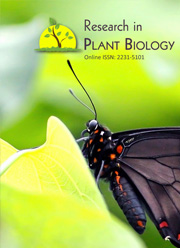Diversity of the Pythium community infecting crown and roots apple in Tunisia
Keywords:
Pythium, apple, decline, varieties, rootstock, virulence, pathogenicityAbstract
The genus Pythium is important in agriculture, since it contains many plant pathogenic species. Little is known about the diversity of Pythium species causing apple dicline. Therefore, the aim of the study was to characterize 21 Pythium isolates collected from root and collar rot apple trees in Tunisia from 2006 through to 2009. The isolates were characterized morphologically as well as through sequence analyze of the internal transcribed spacer region (ITS). Three Pythium species were identified in this study P. rostratifingens, P. undulatum and P. sterilum. In virulence assays on excised apple twigsand in the fields, representative isolates of the different Pythium species isolated were pathogenic on the Anna, Lorka and Meski varieties and the MM106 rootstock. Results obtained show the great susceptibility of the MM106 rootstock to the infections for the different Pythium species tested.Downloads
Download data is not yet available.
Published
15-10-2011
How to Cite
Souli, M., Boughalleb, N., Abad-Campos, P., ÃÂlvarez, L., Pérez-Sierra, A., Armengol, J., GarcÃÂa-Jiménez, J., & Romdhani, M. (2011). Diversity of the Pythium community infecting crown and roots apple in Tunisia. Research in Plant Biology, 1(4). Retrieved from https://updatepublishing.com/journal/index.php/ripb/article/view/2587
Issue
Section
Articles



 .
. 